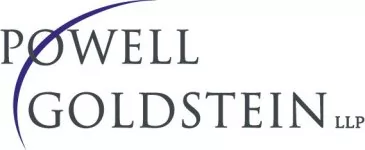In March of 2005, the Financial Accounting Standards Board ("FASB") announced FIN 47, "Accounting for Conditional Asset Retirement Obligations." FIN 47 changes the way companies must report their environmental liabilities, requiring that companies account for the value of retirement obligations when the responsibility itself incurs, not only at the final act of settlement. FIN 47 is effective for fiscal years ending after December 15, 2005, which for most companies is the calendar year 2006. As such, companies must now include information required under FIN 47 in any of their financial statements.
In the wake of corporate accounting scandals such as Enron and the passage of the Sarbanes-Oxley Act, the government reexamined its corporate oversight regulations. FIN 47 is part of this greater government response to increase corporate accountability and transparency in accounting practices. FIN 47 is intended to clarify the June, 2001 Statement of Financial Accounting Standards No. 143 ("FAS 143"), "Accounting for Asset Retirement Obligations." Though FAS 143 made plain that companies must account for their asset retirement obligations, diverse accounting practices arose regarding the timing of the recognition of these legal obligations.
FIN 47 mandates that companies may not wait until they actually retire an asset to acknowledge the associated costs. Instead, a company must immediately account for any obligation about which it has sufficient information to reasonably estimate the costs of retirement. In FIN 47, the FASB provides a clear standard by which to measure the adequacy of that information, looking to markets or to the potential application of present value accounting techniques. With regard to environmental liabilities, FIN 47 will therefore require companies to include in their financial statements the potential environmental obligations resulting from their present actions, even if the retirement itself will not occur until well into the future.
All four of the illustrative examples included in FIN 47 involve environmentally related retirement obligations, demonstrating the FASB’s and the Securities and Exchange Commission’s focus on environmental liabilities.
To illustrate the effect of FIN 47, assume that as part of a company’s manufacturing process it stores raw material in large above-ground storage tanks. This material creates sludge on the bottom of the tanks. Regulations dictate that the sludge must be disposed of in a specific way when the tanks are ultimately closed or retired. This company must account for the cost of disposing of the sludge once it begins using the tanks for storage, despite the fact that the tanks may not actually be retired for years in the future. Though the company may not be able to pinpoint the exact date on which it will close the storage tanks, FIN 47 requires that a company consider its own past practice, its management’s intent regarding the asset, industry practice, and the asset’s estimated economic life in order to ascertain the potential future retirement date.
Identifying all reportable environmental liabilities will be a major hurdle to complying with FIN 47. Although FIN 47 specifically states that it does not apply to "immaterial items," the FASB does not provide a formula by which to calculate the materiality of a retirement obligation. Companies need to examine both the quantitative and the qualitative aspects of the liability itself. In addition, companies may want to consider the aggregate value of multiple, smaller liabilities in examining materiality. Environmental counsel and environmental risk information databases can assist companies in discovering and accounting for, many of their potential environmental retirement obligations.
The new FIN 47 will have a significant impact on the way in which companies must report their conditional asset retirement obligations, particularly those arising from environmental assets. With thorough review of current environmental obligations and careful attention to the specifics of the new rule, companies can insure immediate FIN 47 compliance.
The content of this article is intended to provide a general guide to the subject matter. Specialist advice should be sought about your specific circumstances.
© 2006 Powell Goldstein LLP. All Rights Reserved.


